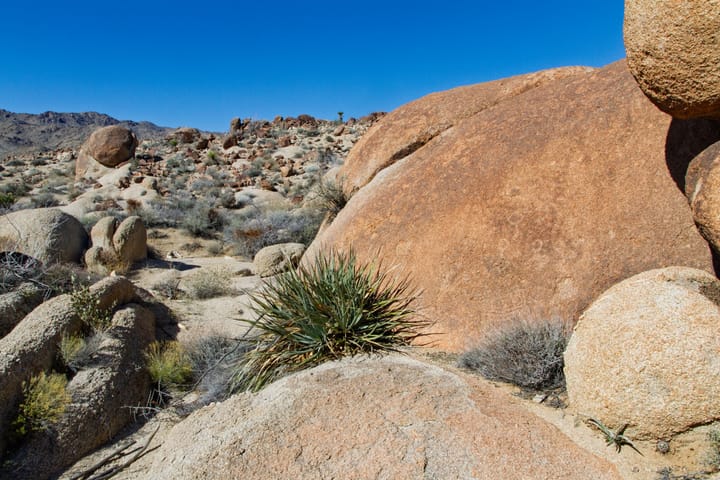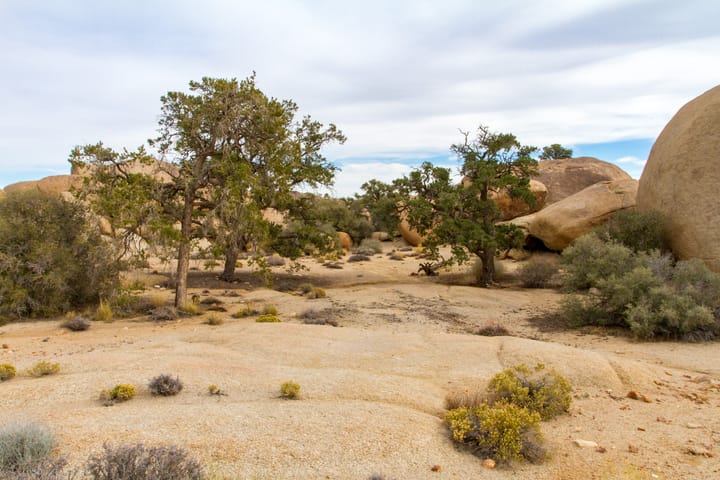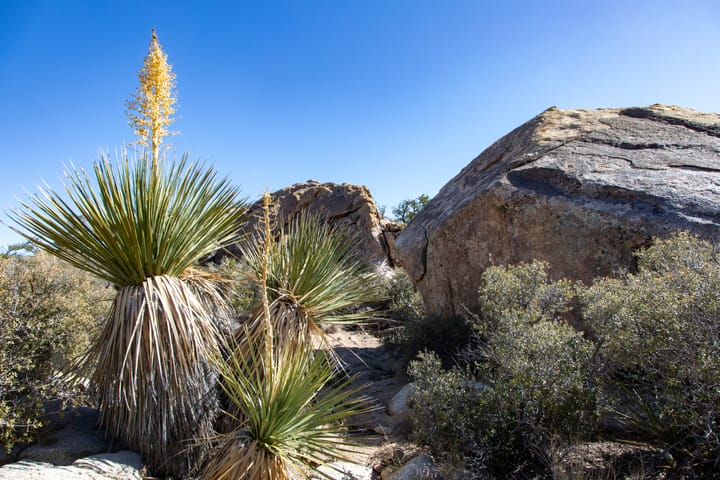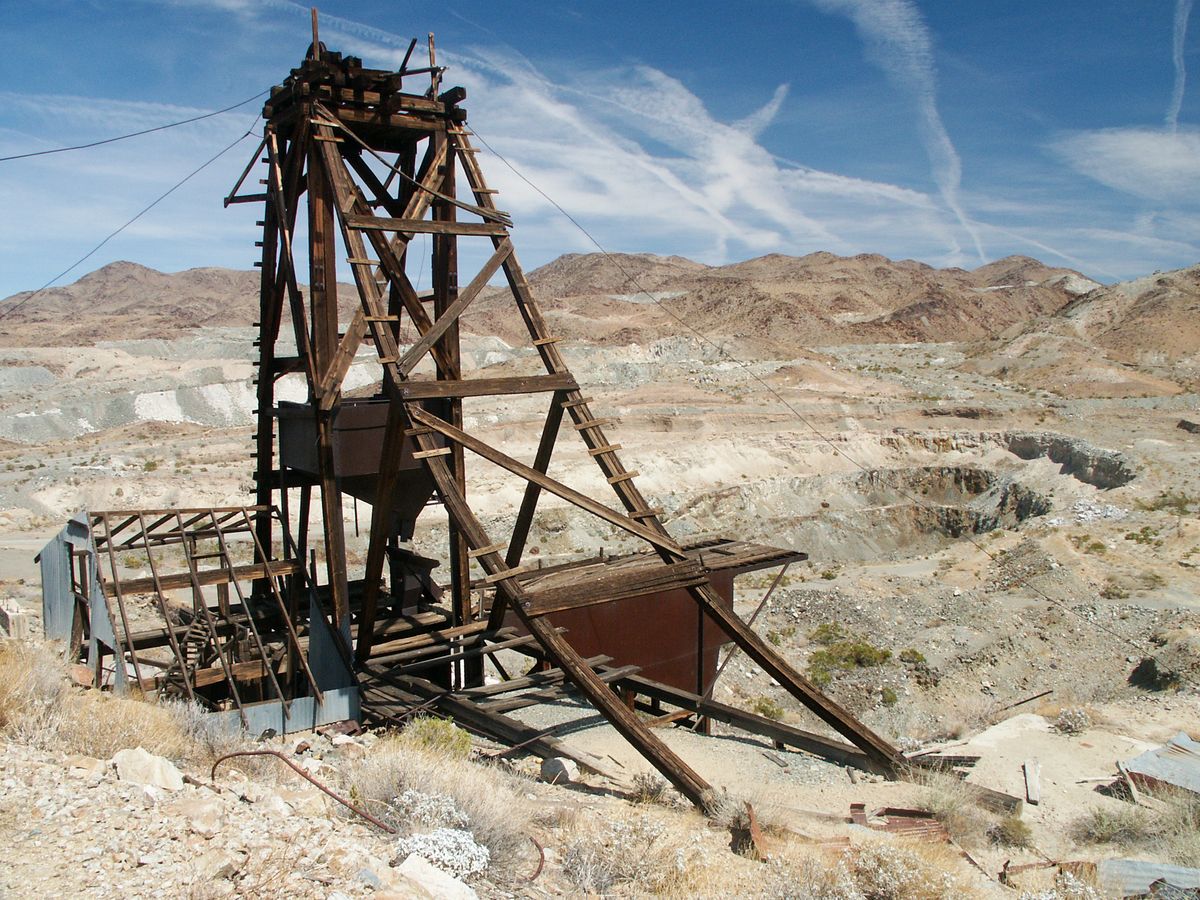Read next

Cary's Castle North Petroglyphs
In 2016, on an adventure north of Cary's Castle (one of many), I stumbled upon these petroglyphs hidden among the granite boulders of the Eagle Mountains. The abstract designs appear to be Desert Archaic in style, likely created by indigenous peoples who traveled these washes for thousands of

Pine City Overlook
Pine City was never a city. Instead, it's a peaceful collection of pinyon pines and junipers scattered among granite boulder formations at 4,200 feet elevation in Joshua Tree National Park. This unusual concentration of drought-resistant conifers in the otherwise sparse desert landscape likely inspired early miners to

